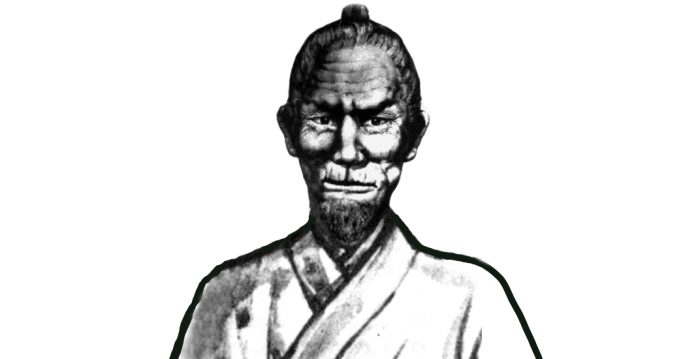Sokon Matsumura was born in Yamagawa Village, Shuri, Okinawa. He began his training in karate-do as a young rebellious teen under karate legend Kanga Sakugawa and studied with Sakugawa for five years, earning the reputation of a martial arts. Sokon Matsumura also trained under the Chinese military attaché Kusanku.
Sokon Matsumura served as chief of the military and as court retainer for the king of the Ryukyu Islands. It is also known that he served as a body guard to the last three Ryukyuan Kings. Matsumura traveled to Fuchou and Satsuma as an envoy on affairs of state.
Sokon Matsumura originated the Pinewood kata Chinto and created the karate style of Shorin-Ryu. Matsumura is also credited with passing on the Shōrin-ryū Kempō-karate kata known as Naihanchi I & II, Passai, Seisan, Gojushiho, Kusanku (the embodiment of Kusanku’s teaching as passed on to Tode Sakugawa) and Hakutsuru.
Among his noteworthy students were Yasutsune Azato, Yasutsune Itosu, Choshin Chibana, Choki Motobu and Chotoku Kyan.
In Fuchou, Sokon Matsumura visited several Chinese boxing schools and studied under military attaches Ason and Iwah.
In Satsuma, Sokon Matsumura trained in the Jigen-ryu sword fighting system under Master Yashichiro Ijuin. Matsumura was the first to introduce the principles of Satsuma’s swordsmanship school, Jigen-ryū, into Ryūkyū kobujutsu (Ryūkyūan traditional martial arts) and he is credited with creating the foundation for the bōjutsu of Tsuken. He also passed on Jigen-ryū to some of his students, including Ankō Asato and Itarashiki Chochu. The Tsuken Bō tradition was perfected by Tsuken Seisoku Ueekata of Shuri.
After retiring, Matsumura taught karate in Sakiyama village, Shuri.
There is no exact information on the birth and death dates for Sokon Matsumura. The following dates have been given: 1809-1901 or 1798–1890 or 1809–1896 or 1800–1892.



